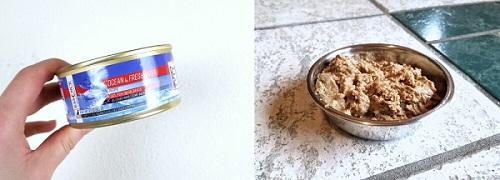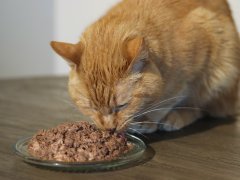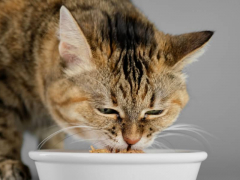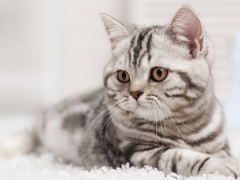
It’s not uncommon to see an adventurous cat climbing through the grass to pounce on a small mouse or anything else that they consider to be “prey.” Nor to see an indoor cat acting on his instincts by catching mice or even rats.
What Is the Difference Between Indoor and Outdoor Cat Food?
When it comes to food cats choose to eat and foods they may turn their noses up to, do environmental factors come into play?

Let’s explore this interesting topic a little more.
Outdoor Cats And What They Chose To Eat
Outdoor cats naturally have access to prey that indoor cats do not have access to, such as birds, reptiles, and small mammals such as mice, squirrels, and rabbits.
Outdoor cats also prey on small animals for fun but not necessarily to kill them but for the “sport.”
With that said, cats will supplement what they’re not getting in their everyday diet with the prey they catch. But overall, food preference is based on the cat’s taste.
“Some outdoor cats may prefer wild prey they catch to commercial kibble diets, but others may like the ease of not having to “catch” their meal,” said Veterinarian Dr. Bradley Quest, DVM.
“This is due to not having to exert the energy to have a meal more than the taste preference of what the cat is eating.”

© Charlie Nunn Photography | https://charlienunnphotography.com
Difference Between Indoor and Outdoor Cat Food
Aside from the obvious difference of an outdoor cat being able to run wild and free outside while an indoor cat has the luxury of lounging around his house and sleeping on his bed, there are other differences between an indoor cat and an outdoor cat but are there differences between their nutritional needs?
“It is a good idea to offer commercial feline diets to even outdoor cats because they may not get all of the vitamins and minerals they need to thrive only from the wild prey they catch,” said Dr. Quest.
“Commercial cat food for outdoor cats needs to be very tasty as well so they eat enough of it to obtain all the nutrients they need to be healthy; wet diets may be preferred for outdoor cats because the texture and moisture of wet foods may be more like the wild prey an outdoor cat is used to.”
Indoor Cat Food vs Outdoor
In other words, a high protein diet is beneficial for both indoor cats and outdoor cats. A great example of a premium high protein diet is Essence Recipes for cats.
It comes complete with at least 86% animal or fish protein ingredients and also contains healthy vitamins and minerals.
For those outdoor cats who seek a wet can recipe, the Essence Recipes in the wet can formula contain 96% animal or fish protein ingredients.
A great example of this is the Essence Ocean & Freshwater Recipe. “Recent studies show that when given a choice, cats will choose high protein diets over high carbohydrate diets,” said Dr. Quest.
“This is probably due to cats being less able to digest and utilize carbohydrates as efficiently as humans or even dogs.”
Can Outdoor Cats Eat Indoor Cat Food?
Indoor and outdoor cats have the same nutritional requirements; however, because of environment, personal preference, natural instinct, and behavior they may choose different foods at different times.
Wet foods can help give cats the water needed in their diet, and mixing dry and wet food is a good idea as well. For more information about nutritional needs for your indoor or outdoor cat, it’s best to talk with your veterinarian.
This is a sponsored post by Pets Global.








Why is canned/wet food containing FISH suppose to be bad/unhealthy for cats? I keep reading conflicting info about this?
I’m aware that fish contain some enzyme that depletes or inhibits the absorption of a particular vitamin in cats, yet manufacturers still add fish to their canned foods?
Hi Dee, some people discourage feeding food containing fish due to the increased likelihood that the food will contain heavy metals (we’ve confirmed this to be the case through lab testing) and increased levels of certain minerals like phosphorus and magnesium, which may contribute to kidney issues in older cats. However, the concern about thiaminase destroying thiamine is not an issue for commercial cat food, which only contains cooked fish. Raw fish is what presents a problem.